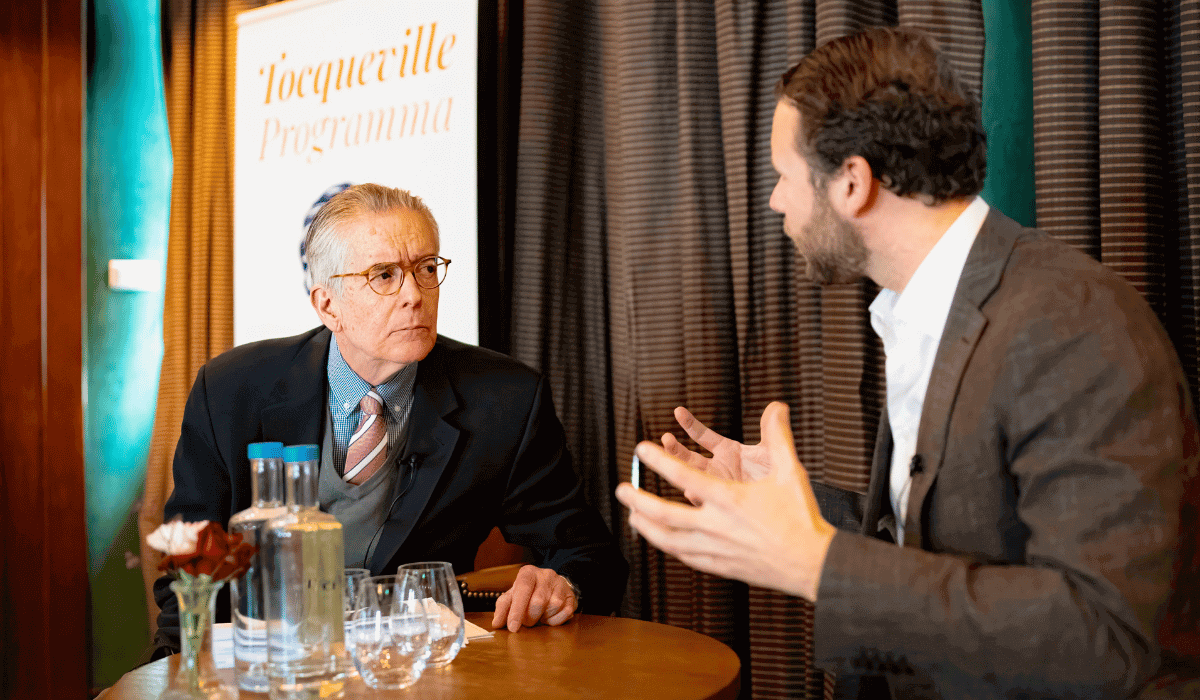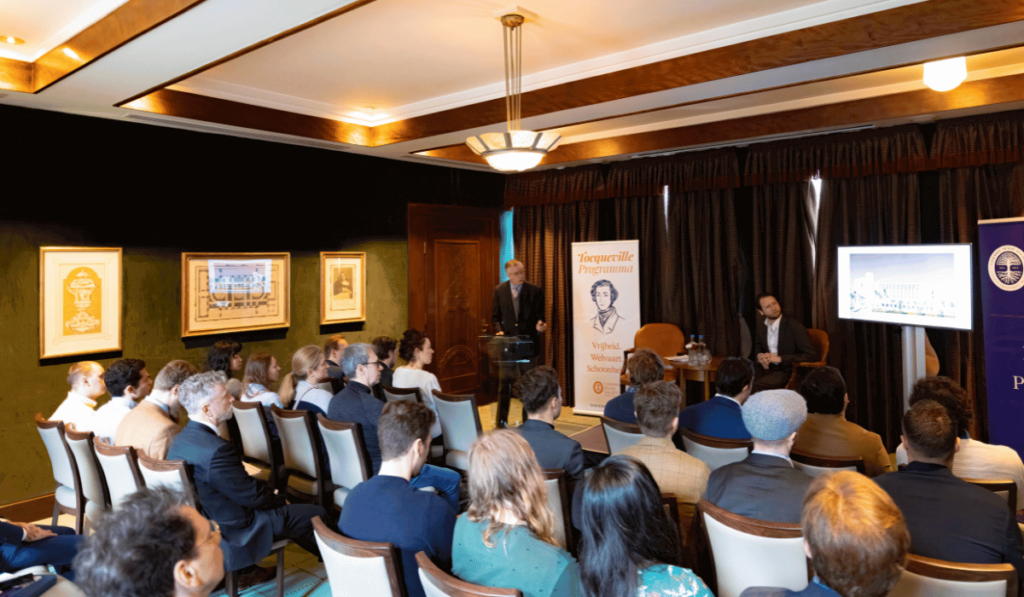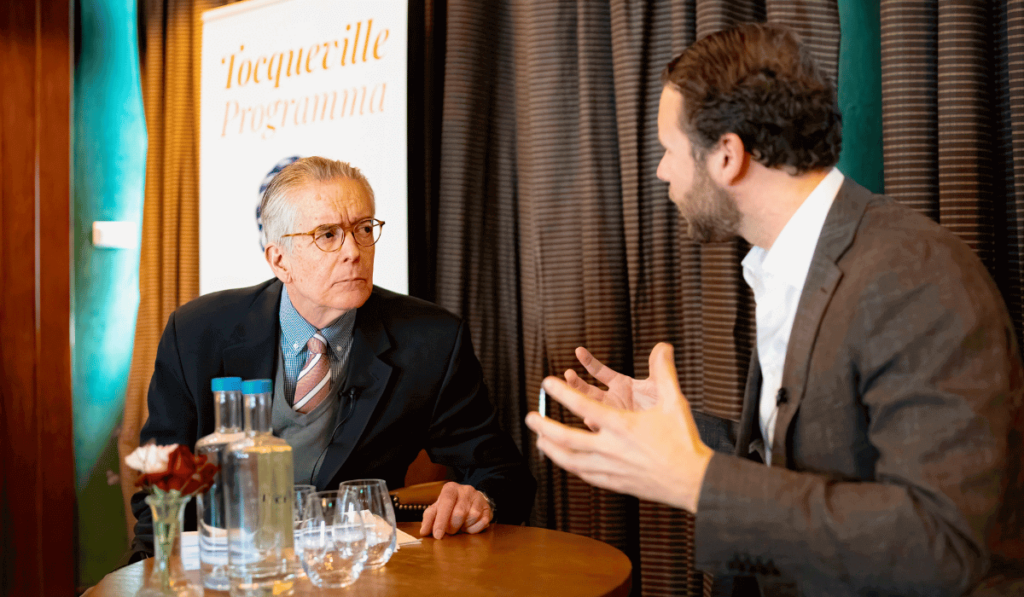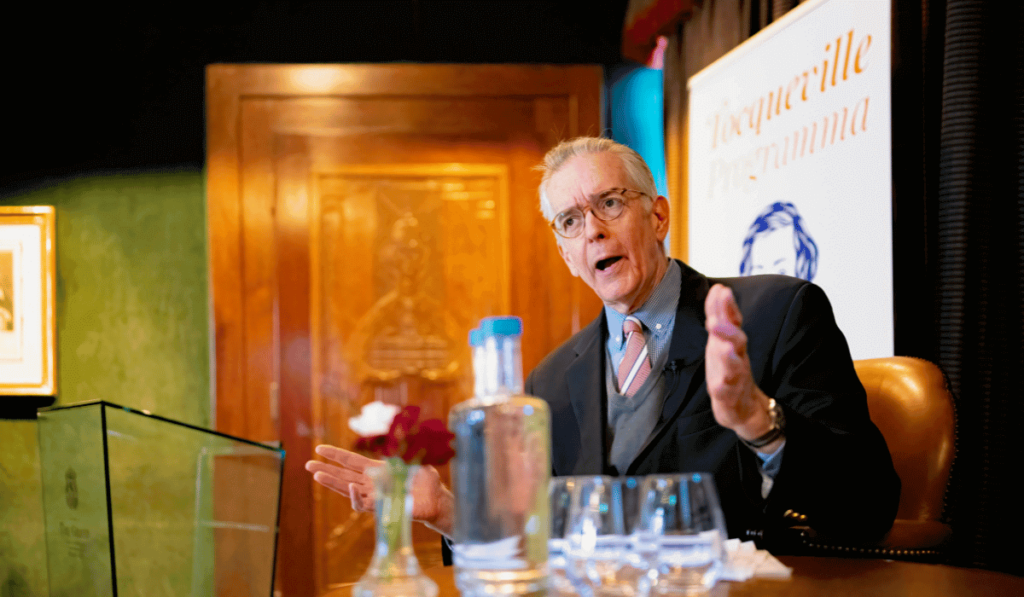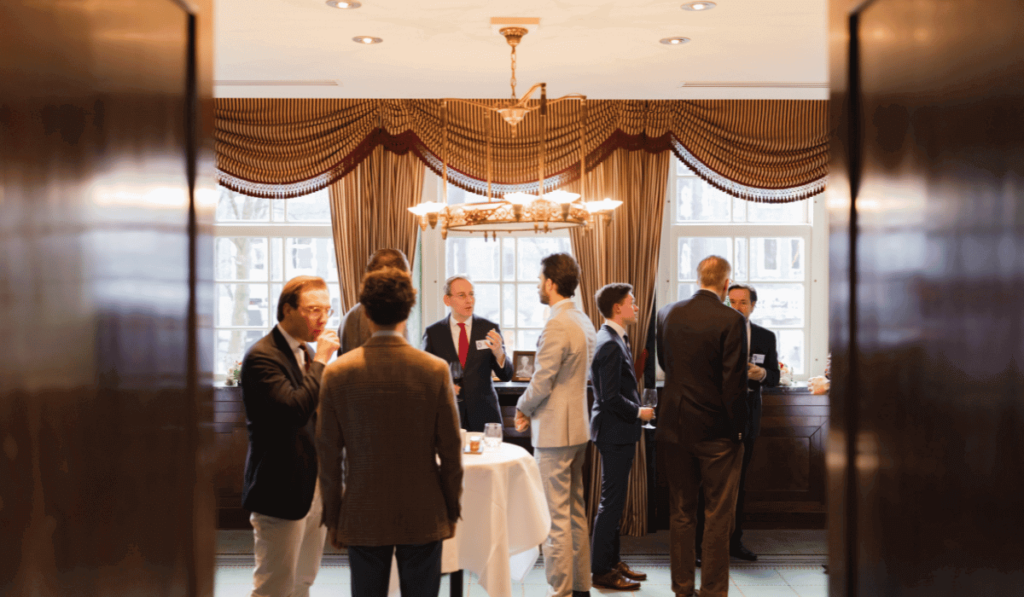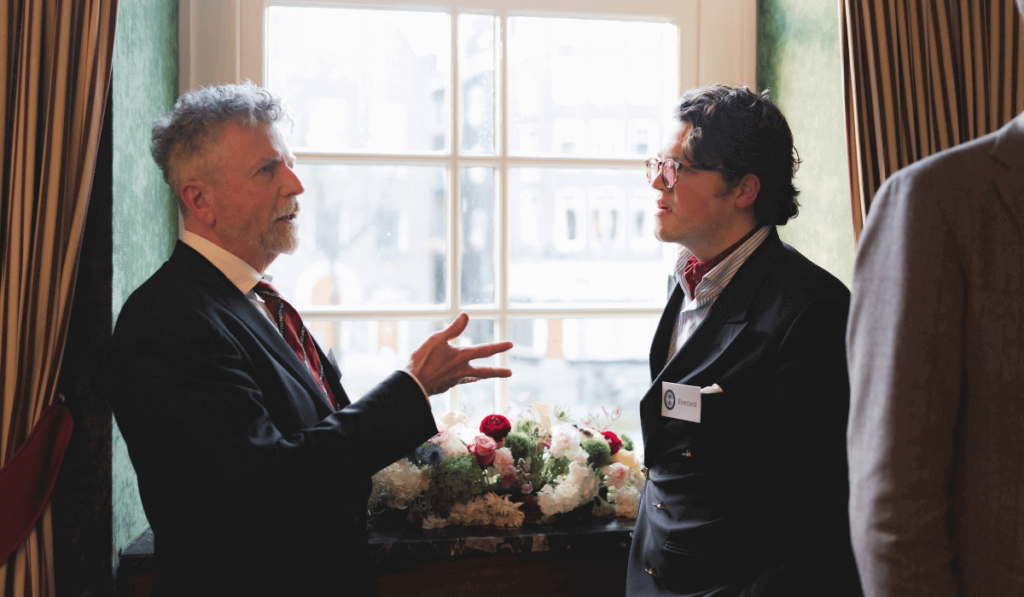On Saturday, February 25, Common Sense Society–The Netherlands (CSS–NL), in collaboration with platform The Aesthetic City, organized a public lecture on Classicism and Public Architecture, as part of our Tocqueville Program. Our guest was the prominent American architecture critic Catesby Leigh. His work has been published in journals such as The American Conservative and First Things, and he was influential in the Trump administration’s decision to adjust aesthetic and architectural guidelines for public buildings. After his lecture, he engaged in a conversation with Ruben Hanssen of platform The Aesthetic City and the audience in attendance. You may replay the lecture and subsequent discussion in its entirety via YouTube here.
What did we discuss?
The central theme was the value of traditional architectural styles, as opposed to modernist ones. The latter have been fashionable among architects for decades, despite their unpopularity among the general public. According to Leigh, however, classical architecture offers a better and more reliable style because of the philosophy and tradition in which it is grounded. Leigh argues that humanistic designs provide the best return in terms of building longevity, aesthetics, function and economic investment.
According to Leigh, traditional form theory guarantees a standard of aesthetic and architectural quality. The classical canon has humanistic roots and a generally recognizable structure and physiology, corresponding to that of the human body. For this, mass, proportion, and detail are of vital importance.
By contrast, (post)modernism is characterized by extreme stylistic inconsistency. What architects praise as “minimalism,” Leigh describes as a state of “aesthetic anorexia.” He argues that modernism has reduced buildings to functionalist commodities: matter dislodged from time and place, and stripped of ornamentation, serving solely to glorify the creative genius (that is, ego) of the architect in question. Thus buildings have become expressions of fads, of temporary fashions and ephemeral values. As a result, modernist buildings often require explanation and explicit commentary.
Here, according to Leigh, a crucial distinction between modernism and classicism reveals itself. Modernism values authenticity (that which is) over classical inspirational ideals (that which ought to be). Consequently, the modernist glorifies childlike creativity as the pinnacle of authenticity, rejecting thousands of years of architectural heritage in the process. This philosophy has had varied results, making its success difficult to predict. Modernism has thus introduced a proliferation of ephemerality, by detaching buildings from their tradition, and by prioritizing individual creativity over higher ideals. According to Leigh, such buildings cannot serve as an example, even though for public buildings this should be a core task.
Classicist buildings, on the other hand, express first principles, Leigh maintains; ideals that have underpinned Western civilization since its inception in ancient Greece. Classicism is an instinctive response to our own embodied state; a reflection on being human that requires no further explanation. Traditional architectural styles exude continuity and timeless values. The beauty of classical designs speaks for itself.
From the audience it was objected that classicism and modernism cannot be lumped together. Both have successful and less successful buildings. Moreover, it would be an uninspiring world if every city limited itself to the same classical columns. It was further suggested that styles that are traditional but not humanist in nature are also conceivable. Consider, for example, buildings erected by the fascists in Italy and Germany. Does a dichotomy of traditional and modernist hold?
Leigh, however, refuses to view the situation in absolutes. According to him, the traditional style should not be seen as a straitjacket, but as a rich source of inspiration. Traditional architecture is not limited to one style, or even to one civilization. Western architectural styles inevitably have their origins in classical antiquity, but there is a rich variety of inspirations and styles within the Western tradition: Romanesque, Gothic, Baroque, Rococo, art nouveau, etcetera. Moreover, in other parts of the world there are other sources to fall back on, which also honor the human scale.
Still, it remains a common objection to Leigh’s argument that building in the classical style would be too expensive. Leigh parries, however, that it is precisely modernist abstractions that cost disproportionate amounts of money, and often continue to accrue costs, because of poor building performance and the premature repairs resulting from this. To illustrate, the modernist 9/11 monument in New York cost $700 million; the traditionalist British monument to commemorate the dead of World War I only a fraction of that. Modernist architecture is not necessarily cheap, and classical architecture is not necessarily expensive.
Does Leigh’s message then espouse a ‘right-wing’ political worldview? Contrary to popular belief, progressivism and modernism are not necessarily synonymous, he thinks. Architecture is first and foremost sensual and emotional, not political. Moreover, the dominance of classicism in architecture in the late 19th century coincided with the period of progressive dominance in American politics! Instead, Leigh explains the rise of modernist architecture after World War II from the fact that architecture is an art for the elite, and that elites seem to have lost their way.
Finally, the question also arose how best to advocate for traditional architecture in an institutional climate so hostile to it. Leigh replies that a grassroots movement is no luxury. Something like it existed briefly in the 1960s, but was soon taken over by modernists. He further argues that conservatives need to develop a culture policy. The political right uses a standard recipe of laissez-faire market forces for many a social problem. This, he says, has proved inadequate.
What may we conclude?
Building in classical style is both possible and desirable from an aesthetic, functional, and even economic perspective. Modernist buildings often suffer from architectural non-performance and are rarely created for the long-term. Whereas traditional designs convey an ethos and are an expression of a civilization, modernist buildings primarily serve to grow architectural egos. Encouraging a grassroots movement that champions traditional architecture may be one way to turn the tide.
